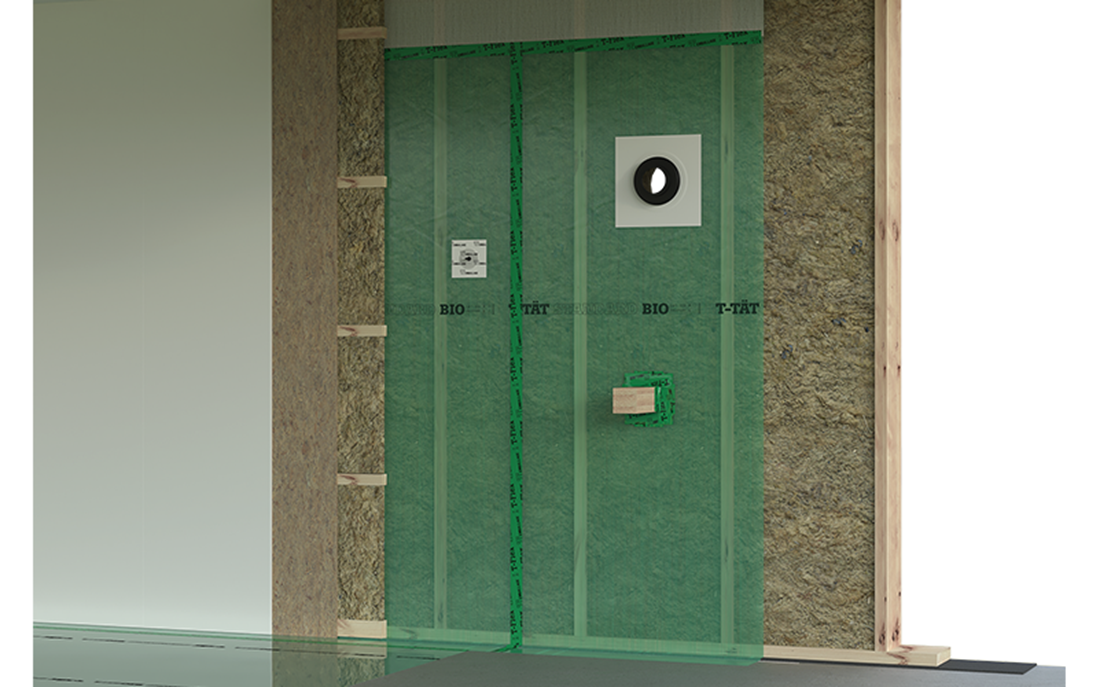The construction industry's first bio-based air and vapor barrier - T-Tät Standard BIO
As part of reducing environmental impact, we have now developed an air and vapor barrier based on green bioplastic. The air and vapor barrier T-Tät Standard BIO, which is installed in the house wall, consists of 90 percent fossil-free material. The green plastic is also fully recyclable.

We want to inspire ourselves, our partners, customers, and competitors to transform the industry with new, more environmentally friendly products. We also want to be clear about what we are doing to reduce climate impact.
About the material
The green plastic is called I'm green™ Polyethylene and is developed by a company called Braskem. Instead of using the fossil raw material oil, the plastic is made from a sustainable raw material where bioethanol is extracted from Brazilian sugarcane. The sugarcane captures CO2 from the atmosphere in its annual growth cycle. This means that the production of I'm green™ Polyethylene helps reduce greenhouse gas emissions compared to conventional polyethylene made from fossil raw materials like oil or natural gas. An environmental improver from the start, indeed.


The suppliers of the raw material meet established KRAV principles for sustainable development, covering aspects such as respect for biodiversity and good environmental practices. These requirement levels stand in stark contrast to unsustainable raw material production of sugarcane and deforestation of rainforests, which are sometimes rightly highlighted in the debate, for example, related to the Amazon.

T-Tät Standard BIO has undergone the same thorough tests and quality evaluations as our air and vapor barrier T-Tät Standard, and we feel very confident that the properties and quality are at the same high levels.
Properties T-Seal Standard BIO:
- At least 50 years of aging resistance.
- Made from 90% fossil-free, bio-based plastic, instead of traditional oil and fossil-based plastic. This reduces both oil consumption and carbon dioxide emissions.
- As the sugarcane captures CO2 from the atmosphere in its annual growth cycle, it can be said that they sequester carbon dioxide, which promotes the reduction of the greenhouse effect.
- Recyclable material.



